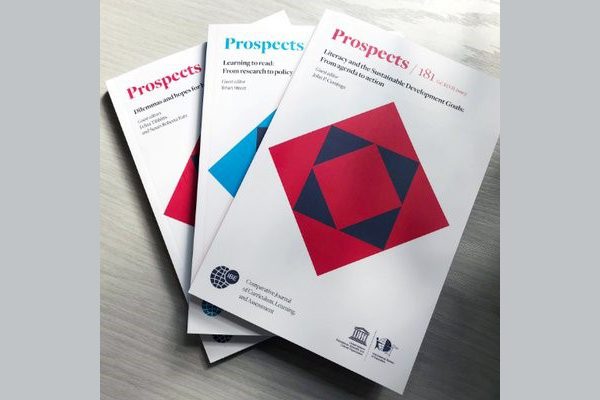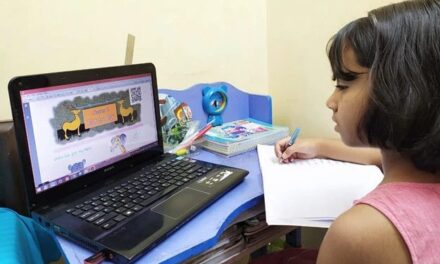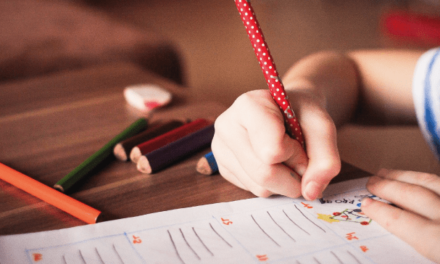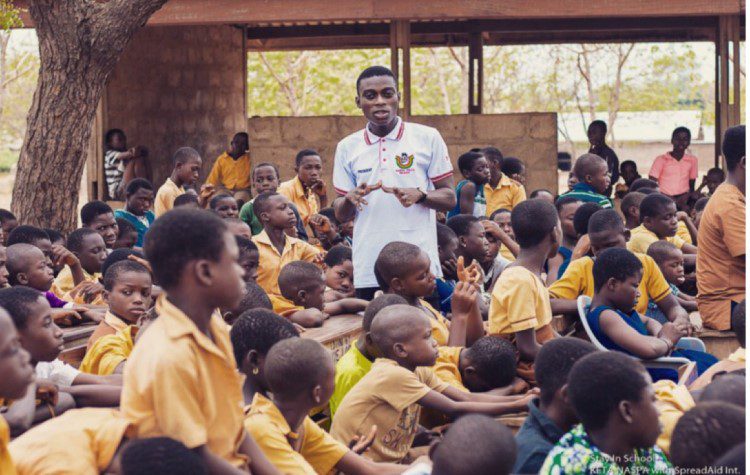This blog was written by Keith Lewin, Emeritus Professor of International Development and Education at the University of Sussex, and Chair of the UKFIET Trustees. It outlines ideas which are developed more fully in the latest edition of Prospects: ‘Contingent reflections on coronavirus and priorities for educational planning and development’, published 26 June 2020.
The COVID-19 pandemic has dramatically shifted short-term education and development priorities. The tragic death toll and high rates of morbidity across many countries are an unprecedented setback and a calamity for those affected physically and mentally. The economic and social effects of lockdowns, loss of production and business confidence, and global recession will cast a long shadow over education systems. Despite the 435 million items that Google already indexes under “COVID-19 education”, many things remain unknown. No one has a clear idea of how the current pandemic will unravel over anything but the short term. The challenge is to strengthen the mechanisms that can separate evidence from opinion and to balance popularism with speaking truth to power— especially when political systems can find it difficult to distinguish fact from convenient fiction.
 Ten propositions can be used to shape policy dialogue and whatever iteration of the Sustainable Development Goals is needed to ensure they remain fit for purpose.
Ten propositions can be used to shape policy dialogue and whatever iteration of the Sustainable Development Goals is needed to ensure they remain fit for purpose.
Proposition 1: The basic arithmetic of organising and financing of mass education systems will remain structurally the same as it was before COVID-19. Mass provision of education will continue to be provided through schools that are publicly funded, especially for the poor and marginalised. The public good of extending learning to all will remain undiminished and will need to be closely coupled by reducing the inequalities that COVID-19 will exacerbate.
Proposition 2: The amount of grant aid from donors will plateau and may fall, as the appetite for aid to education comes under increasing pressure from new domestic priorities and economic recession. The domestic political economy of development assistance in donor countries will diminish willingness to give grant aid, accelerating existing trends. Investments in health care systems and global health will take precedence over access to education and learning. Tied aid will become more common as rich countries seek to rebuild their own employment and corporate revenues.
Proposition 3: LICs and LMICs will suffer more than OECD countries from reductions in domestic revenue, making educational financing more difficult. Domestic economic activity is being compromised by lockdowns, morbidity has a direct effect on productivity, falls in demand for exports are reducing taxable transactions, and income and tourist revenues are collapsing. The collection of personal income tax will fall as employment shrinks, VAT receipts will drop, and corporate taxes will follow the downward economic cycle. Remittances will drop dramatically, with a huge impact on LICs and LMICs that export labour. In most LICs and LMICs, savings will not be sufficient to buffer recession.
Proposition 4: Education systems will reopen and will rebuild themselves in ways that largely replicates their existing form, with more attention to systemic risk. Assuming COVID-19 is mitigated and morbidity falls to levels similar to the aftermath of previous pandemics in five years’ time, existing structures of mass education systems will have adapted and will persist. The organisational forms, physical structures, working practices, and roles in social reproduction and economic development of education systems are deeply embedded. Evolution is more likely than revolution in system development. Planning will need to place more emphasis on resilience and more “just in case” measures to complement approaches that seek efficiencies through “just in time”.
Proposition 5: The global pandemic has illustrated the importance of global public goods like health and education. Almost all countries have had public health campaigns to manage COVID-19. These require skilled staff in public health systems that generate and validate health messages, as well as a literate and numerate population capable of understanding and acting on such messages. The crisis has highlighted how public institutions are at the heart of a response to the crisis that requires collective action and responsible sharing of the burden of disruption, the risks of infection, and the costs of treatment.
Proposition 6: Non-state providers have to develop business plans that factor in a new economics of private school operation. Private schools depending on fee-paying students will have to manage a significant loss in income as household income is squeezed. Austerity will have a disproportionate effect on middle- and lower-income families, where effective demand for fee-paying private schooling will fall. It may also be reflected in gendered preferences to enrol and other social exclusions of relatively powerless groups. New arrangements for social distancing in classrooms are likely to inflate costs.
Proposition 7: Children currently not attending school as a result of school closures by governments should not be confused with conventionally defined Out-of-School Children (OOSC). The causalities are unrelated, and the numbers affected are vastly different. A precipitate rush into distance education, artificial intelligence-driven internet schooling, or home schooling is both unrealistic and unwise until the temporary and permanent effects of COVID-19 can be distinguished from each other. It will be a mistake to adopt new pedagogies in a hurry with only opinion as a foundation for action.
Proposition 8: Teachers have to be seen as key workers, and schools as key institutions. Teachers have not been considered “key workers” in most countries, except to meet the need to keep some schools open for the children of other key personnel. As infection rates fall, schools will continue to play a central role in the ability of societies to reproduce themselves, transmit knowledge and skill across the generations, and encourage behaviour based on evidence rather than superstition and commercial interest.
Proposition 9: Sustainable Development Goal 4 (SDG4) for education needs to be revisited in the light of COVID-19. The force majeur of the pandemic is causing unplanned disruptions and the world is now seriously off-track to achieve SDG4. There are many implications for SDG4 including i) children de-schooled by temporary closures may not return; ii) ambitions to extend universal schooling to grade 12 look premature, given the costs and likely falls in levels of employment; iii) demand for technical and vocational education will fall; iv) equitable opportunities to learn are threatened by instabilities in income, staffing and safety; v) universal literacy has less utility as modern sector development slows; and vi) global citizenship is challenged by closing borders and restrictions on movement of workers and students. How should the Goal and targets now be adapted to the radically different country circumstances created by COVID-19?
Proposition 10: The SDG4 indicators also need to be changed, even if SDG4 and its Targets are retained. Useful targets need to be achievable and target setters must co-commit with target getters to common indicators that are relevant to different systems. What is important is dependent on where education systems are located on the pandemic curve. Measuring changes in enrolment rates during a system closure has a different meaning, learning levels need assessing in a different way before and after disrupted schooling, and gender equity may look different as a result of changes in social care. GDP in many LICs and LMICs will fall and educational spending will prove sticky on the downturn. The SDG4 indicator of the percentage of GDP spent on education will mislead. It will increase in value if GDP shrinks faster than educational spending though less money will be spent on education. It needs replacing.
The pandemic is nowhere near over. It will not be resolved in 2020 and COVID-19 may return. History suggests that all pandemics dissipate, and that underlying trends of development reappear with a degree of continuity with the past. Global prescriptions have to be matched by local interpretations of what works best in context. Education systems have a special responsibility to disseminate and interrogate evidence on COVID-19, so that real facts are not overshadowed by superstition, self-interested bias, and electoral expedience.
Until it becomes much clearer what aspects of social and economic organisation really have irreversibly changed, which new developments are functional and durable, and which have the support of effective demand rather than the fragility of supply-pushed solutions, the smart money is on incremental recovery and development strategies closely coupled to feedback on effects. Radical departures that imagine away inconvenient truths about the difficulties of educating all the children, overlook growing inequalities, and put faith in simple solutions to complex problems risk undermining much of what has been achieved over the last three development decades. The need is to stay focussed on development that is economically, socially, medically, and educationally sustainable, and that preserve Spaceship Earth for future generations. Seriously revisiting the SDG4 targets and indicators and their relationships with other SDGs and economic recovery from global recession, would be a great start.
The ideas in this blog are developed more fully in Prospects: Contingent reflections on coronavirus and priorities for educational planning and development DOI: 10.1007/s11125-020-09480-3






J trouve les propos d l’auteur assez alarmistes et pessimistes tout se passe comme si la Pandémie est vue d’Europe pour tous….En Afrique l’ampleur annoncée n’a pas eu lieu ..bien que les dépenses de Santé aient été augmentées par principe de Précaution. Pandémie ou Pas les dépenses d’Education en Afrique sont faibles et amenuisement sournoisement au profit de la sécurité et autres priorités Politiciennes qui font que les 20% escomptés sont loin d’être atteints dans nos Budget . LES POLITIQUE S EDUCATIVES SE LISENT DANS LES BUDGETS et les ETATS AFRICAINS au SUD du SAHARA …. n’accordent pas une priorité absolue à l’ Education….. qui est un secteur pseudo non marchand qui coute cher trop cher..mais avec un retour sur investissement long ….
Dans ces conditions….
il n’est pas besoin de reviser les indicateurs des ODD4 ni revoir quoi que ce soit…..
DES OMD aux EPT en passant par les objectifs de dakar 2000 ….. tout a été ECHEC dans les prévisions de l’Education ..en ce qui concerne les pays Africains…. on n ‘a jamais rien revisé!
On sait que l’Enseignement technique et professionnel est le parent pauvre de l’ Enseignement en Afrique et au Cameroun en particulier …MAis cela n’a pas empêché la BAnque Mondiale de valider un projet de 71 millions de $ en faveur du MINESEC avec 60% EN JUILLET DENIER… des fonds pour promouvoir l’Enseignement GENERAL….c’est vous dire!!!!!!!!!!!!!!!!!!!!!
PAR CONTRE SI LES MESURES PRISES POUR COMBATTRE LA PANDEMIE DANS NOS ECOLES …. doivent être efficaces…il faudrait que nos ECOLES ET UNIVERSITES face attention et observer……. ce qu’il suit
Art. sur COVID19 **
Contexte
.Le 05 Aout dernier… L’UN via l’UNESCO a publié des recommandations(04) à l’intention de la Communauté Educative….-1-planifier soigneusement la réouverture des Ecoles pour supprimer propagation pandémie//2- protéger Financement de l’Education… sauvegarder budget… ///3- Renforcer résilience des Systèmes E…////4 Re-Imaginer l’Education et accélérer changements… avec TIC..assurer bien être des acteurs-
L’UNESCO aux côtés des autres PTFS au premier rang desquels l’OMS …. a fort heureusement pris en urgence de nombreuses mesures et initiatives …pour appuyer les pays Africains à riposter contre le COVID19 …
MAIS ces mesures n’ont pas convaincu les Européens qui n’avaient autorisé qu’à 04 pays à entrer chez EUX!!
J’ai lu avec intérêt les interventions en faveur des pays Africains dans la lutte contre le COVID19…. notamment Ex …au Tchad (24 juin 2020)….concernant l’enseignement formel / la F continue/ l’élaboration des situations d’apprentissage… et autres solutions avec EAD et TIC…
A la rentrée 2020-21…Le secteur de l’Education qui, après une fermeture des Ecoles, sera bien obligé de les RE OUVRIR… de vivre avec le COVID19 et d’accueillir en Afrique Centrale environ 15 millions d’élèves…Au Cameroun ce sont près de 8 millions d’enfants qui sont attendus à l’ECOLE en Octobre….
Et le MINESEC le MINESUP & le MINEFOP pourraient accueillir environ de 2 millions…avec dans les villes des effectifs pléthoriques qui amènent les classes dans nos lycées, collèges et campus à encadrer 100 élèves et plus par classe !
Que faire pour rassurer?
*
je fais une suggestion sur ce que pourrait faire le Secteur de l’Education d’un pays .Africain… comme le Cameroon… aux effectifs pléthoriques pour essayer de respecter les Mesures Barrières à l’Ecole….et limiter la propagation de la Pandémie… avec des dispositifs opérationnels…contre le COVID 19…
pj : article…
BACK TO SCHOOL DESPITE COVID19 with SAFETY
L ‘Ecole en Afrique en zone CEMAC souffre, depuis de longues années des problèmes d’apprentissage notamment causés par les déficits d’infrastructures, d’enseignants et de manuels scolaires. Pour les millions d’élèves évoluant souvent dans des classes aux affectifs pléthoriques, il va falloir, cette rentrée scolaire s’occuper en plus de leur santé en raison du COVID 19.
Au Cameroun, Sauf exagération de notre part, et dans la plupart des pays d’Afrique centrale, ils seront nombreux – environ 8 millions au Pays… plus de 15 M en CEMAC- d’élèves, étudiants et apprentis à prendre d’assaut l’Ecole en octobre prochain pour la rentrée 2020/21. Ils remettront sur table les maux un instant oubliés – effectifs pléthoriques et qualité pauvre de l’encadrement-, dans nos Ecoles, Collèges, Lycées, Fac, et Centre de formation, que la reprise partielle des cours en format réduit aux classes d’examens avait fait oublier !
Comment dans cette perspective imposer les Mesures Barrières à Tous et motiver davantage les Enseignants pour préserver la qualité des enseignements malgré le COVID19 ?
Toutes les mesures annoncées dans le plan de riposte des Gouvernements en général et du Cameroun en particulier – validé par le GPE avec 11millions de $- seront-elles efficaces et de nature à préserver la sérénité des acteurs pour opérer un back to school despite COVIOD19 with safety ? Rien n’est moins sûr !
Comme Conseiller d’orientation-Planificateur, nous pensons que pour une meilleure efficacité, il serait urgent que certaines dispositions soient prises pour assurer la pérennité des mesures barrières, l’encadrement de qualité, la disponibilité et la motivation des acteurs – surtout des enseignants-. Pour ce faire au premier rang on devrait:
1-Pérenniser les mesures Barrières dans les Ecoles en modifiant leur règlement intérieur :
a- inscrire le port obligatoire de Masque dans nos classes, campus et ateliers- cette inscription doit être assortie de sanction – elle rend opposable le règlement à l’Elève – campagne de…NO one day in school without my MASK !
b. rendre le dépistage systématique dès la 1ere semaine dans les Ecoles secondaires et universités
c.relever le niveau de la prise en charge santé : la CSU – au Cameroon, la Couverture Santé Universelle gratuite irait jusqu’à 05 ans ; or le primaire va jusqu’à 11 ans et l’Enseignent fondamental devrait aller jusqu’à 15 ans si on veut se rapprocher des recommandations de l’ODD4. Ainsi accompagner ces enfants et assurer leur santé obligerait à réviser et/ou instituer la Gratuité et l’Obligation scolaire jusqu’à la fin du Fondamental, ce d’autant que le vaccin contre le Paludisme qui tue beaucoup d’enfants, est lointain!C’est le lieu de lancer un appel au Ministère de la Santé qui prépare la mise en place de la CSU pour soutenir le capital Humain…! – des millions d’enfants sont exclus d’office de cette couverture…alors que l’Ecole est obligatoire à ce niveau mais l’accès est sournoisement laminé par le Paludisme…* le programme Roll back Malaria RBM…traine…ni clair..ni efficace….depuis 2011 malgré Slogan malaria no More …comme plan depuis 2015 !!
2- Assurer l’Accès et la Distanciation avec un meilleur usage de la Carte scolaire comme outil d’analyse et d’aide à la décision en passant du SIGE – Système d’Information de Gestion de l’Education- au SID- Système d’Information Décisionnelle: les Ecoles de manière différenciée modifieraient les rythmes scolaires et la journée du Samedi matin sera réhabilitée pour certains afin de pallier aux problèmes d’effectifs pléthoriques surtout dans nos grandes villes ; si une classe a un effectif de 105 élèves ou 120 …au delà des EAD ou TIC, il faudra diviser la classe de, manière équitable: un groupe viendrait de 7h à 12h et l’autre de 13h à 18h-jusqu’au samedi matin- l’heure creuse sera destinée à désinfecter les salles.
3-Relever le quota hebdomadaire de cours des enseignants à 25 h/semaine pour tous. L’opportunité de dispenser officiellement 15h /semaine supplémentaire par chaque enseignant dans son établissement ou celui attaché à son bassin pédagogique préalablement créer sera acté – il suffit de lier ces bassins aux arrondissements…avant la rentrée et sera fini le phénomène des profs à 6 ou 10 de cours semaine !- . Au primaire, il faudra sans doute tripler le recrutement des Titulaires du CAPIEM et les payer par l’Etat via les Bons.
4- Mettre en place des school–chèque –les bons- pour amener l’Etat à payer les vacations des enseignants et Epargner les parents via les APEE. Ce paiement d’urgence permettra de préserver les budgets, l’encadrement, motiver les enseignants et partant assurer la qualité. Le School -chèque serait une sorte de bon d’achats que les Pouvoir publics institueraient avec l’appui solidaire des Messène ou grand magasins commerciaux… -souvent si larges lorsqu’il s’agit d’appuyer certains partis politiques- qui accepteraient les bons émis : si un vacataire de lycée ou de fac …est payé au meilleur des cas à 10€ de l’heure, en 15 h/semaine …il aura un max de 600€ qu’il pourra utiliser dans les magasins citoyens qui auraient adhérés au projet et l’Etat par un jeu de Taxe différée pourra compenser ces magasins ou rembourser plus tard. Ne perdons pas de vue que les Crises engendrées par la Pandémie, a fait perdre aux Economies Africaines d’importantes recettes fiscales et partant au Secteur de l’Education des ressources: au Cameroun, le budget de l’Education 2020 a été amputé de plus de 21 milliards de Fcfa donc 9 à l’enseignement de Base et 12 à l’enseignement secondaire !
5-
Mettre à contribution les Fac de Sciences de l’Education pour former les enseignants du premier Cycle des collèges – cette disposition permet d’épargner les ENS et de multiplier par 10 le nombre de postulants qui seront recrutés sur concours à la fin de leur formation comme cela se fait avec les titulaires des diplômes des Instituteurs –le CAPIEM. Ce sera une opportunité de recycler les vacataires qui inondent les lycées et collèges souvent sans socle pédagogique solide: ils sont nombreux dans nos pays qui enseignent sans niveau requis! Et partant ce sera l’occasion de finaliser la mise en application la Loi d’orientation de 98 qui supprime notamment le BEPC et le Probatoire dans la formation des Instituteurs – pour 1000 places le MINFOFRA avait reçu près de 53000 dossiers et le MINEDUB pour 3000 places …39 000. C’est vous dire !
Pour Conclure… Dans un contexte d’incertitudes, il ne faut pas baisser la garde !
L’Ecole n’est pas un sanctuaire clos épargné des problèmes sanitaire, économique, social, ou sécuritaire ! Elle devrait vivre avec la Pandémie pendant un bon temps en raison des incertitudes qui vont de la controverse des thérapies efficaces jusqu’à la production hypothétique des vaccins. L’Education est un secteur pseudo-non marchand qui coûte cher et qui le sera davantage si nos enfants tombent malades ou contaminent leurs parents. Malgré les promesses de Bill Gates pour un Vaccin en 2021 … le Dr M.YAO de l’OMS préconise la plus grande vigilance aux Africains en raison du nombre sans cesse croissant des contaminations communautaires- et l’organisation recommande le port du Mask dès l’âge 12 ans : à ce jour, plus de 21 millions de cas dans le Monde donc plus d’1million en Afrique avec la RSA en tête malgré un système sanitaire plus performant. Et les pays occidentaux comme la France ou l’Italie durcissent à nouveau les mesures barrières.
L’OMS, L’INEE et forcément le GPE, le LEG et les PTFS devraient davantage sensibiliser NOS Décideurs pour des solutions opportunes d’urgence afin de faire face efficacement au COVID19. Nous avons la preuve qu’ils sont mieux écoutés… si l’alarme vient de l’OMS ou des PTFS comme l’UNICEF ou la Banque Mondiale- le souvenir de l’adoption du livre unique est parlant.
PRISO E.
Lanceur d’Alerte / ernestpriso@yahoo.fr
: